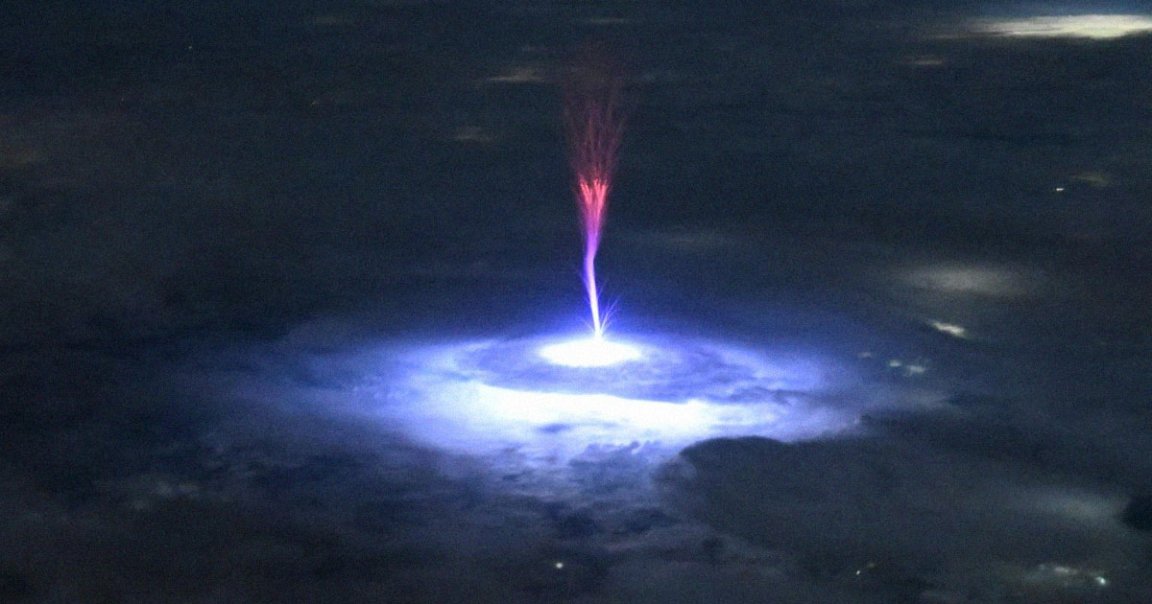
Red Sprite
NASA astronaut Nichole Ayers, currently stationed on board the International Space Station, shared an incredible image of a sprite — a rare weather phenomenon that’s triggered high above the clouds by “intense electrical activity in the thunderstorms below.”
The image shows the rare electrical discharge in the shape of a starkly red, upended umbrella, hovering high over a brewing storm, like some sort of occult tower from “Lord of the Rings.”
“Just. Wow,” Ayers tweeted. “As we went over Mexico and the US this morning, I caught this sprite.”
Being hundreds of miles above the surface of the Earth gave Ayers the perfect vantage point to watch the stunning event unfold.
“We have a great view above the clouds, so scientists can use these types of pictures to better understand the formation, characteristics, and relationship of [Transient Luminous Events] to thunderstorms.”
Seven Up
According to NASA, sprites can appear at altitudes of around 50 miles, which is far higher than where thunderstorms form. They often appear mere moments after lightning strikes, forming spiny tendrils of red plumes.
The otherworldly phenomenon, which was first officially observed in 1989 photographs, is still poorly understood. Scientists have yet to uncover how and why they form.
In 2022, NASA launched a “citizen science project,” dubbed “Spritacular,” to crowdsource images of the TLEs. According to the project’s official website, over 800 volunteers have joined the effort, and 360 observations have been collected across 21 countries.
Other TLEs include elves, an acronym for “emission of light and very low frequency perturbations due to electromagnetic pulse sources,” and jets, a type of cloud-to-air discharge that can appear as blue tendrils.
“While sprites [and other TLEs] may appear delicate and silent in the upper atmosphere, they are often linked to powerful, sometimes devastating weather systems,” University of Science and Technology of China PhD student and TLE expert Hailiang Huang told National Geographic last week.
“Understanding them not only satisfies our curiosity about the upper atmosphere, but also helps us learn more about the storms we face here on Earth,” he added.
Best of all, studying TLEs could even help us learn about distant planets: NASA’s Juno mission found evidence of sprites and elves in the atmosphere of Jupiter as well.
More on sprites: NASA Crowdsourcing Investigation of Otherworldly “Sprites” in Sky